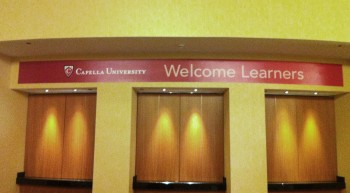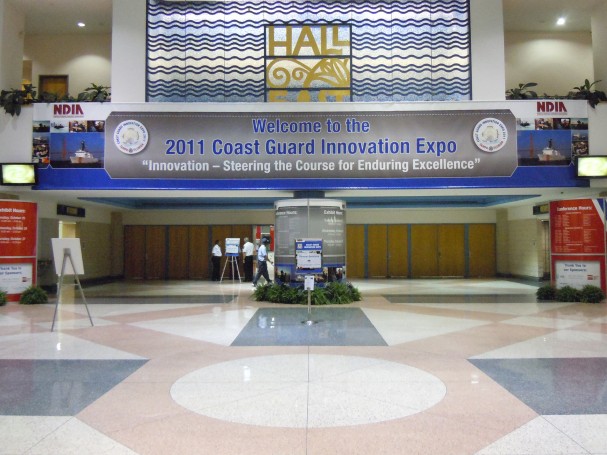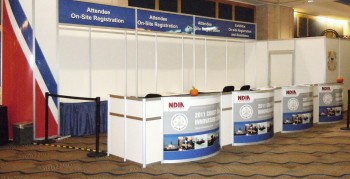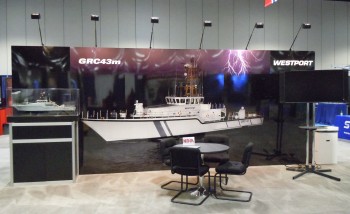 It was a simple application, but it’s not always as simple as it first seems. Capella University needed a nice-looking “Welcome” sign prominently placed at a recent event. The solution was a wall graphic applied on an overhanging curved wall in the registration area.
It was a simple application, but it’s not always as simple as it first seems. Capella University needed a nice-looking “Welcome” sign prominently placed at a recent event. The solution was a wall graphic applied on an overhanging curved wall in the registration area.
The trick, as it often is in these cases, was finding a material that was easy to work with, would stick to the wallpaper and not destroy the wallpaper once it was removed. So Bill Harriman, owner of Custom Signs & Graphix in Brooksville, Fla., decided that LexJet’s new Simple WallCal (6 Mil) would hit the spot. “I decided to use WallCal after consulting with my LexJet sales rep, Tom Hauenstein. He had personal experience with the material and was able to assure me it would work as advertised. It is very hard to read and believe all that you see online, but after talking to Tom I felt this would meet my high expectations,” says Harriman.
“It was applied to a hotel’s wallpaper and I haven’t heard of any problems removing the graphic since it was only up for about a week; it performed as advertised. I’m sure I would have heard about it if it didn’t work properly when they removed it,” Harriman adds. “I installed it myself because you often run into weaknesses in the wallpaper. Sure enough, some of the wallpaper was curling a bit, but we still didn’t have a problem installing it.”
The graphic is 20″ tall by 22 feet long and Harriman broke it into two 11-foot long panels for ease of installation. Simple WallCal’s microsphere adhesive allows the material to be repositioned frequently during installation and makes it easy to remove, without damaging the surface to which it’s applied, for up to a year.
“The low-tack materials, especially for all the trade shows and conferences we do, are pretty cool. What makes this an interesting project, for me anyway, is not so much the content – beautiful, multi-color graphics – but that it was applied directly to a multi-million dollar hotel’s wallpaper and performed well,” says Harriman. “The material also has very good image quality. I’m using an Onyx RIP that helps keep everything consistent from water-based to solvent printing.”



